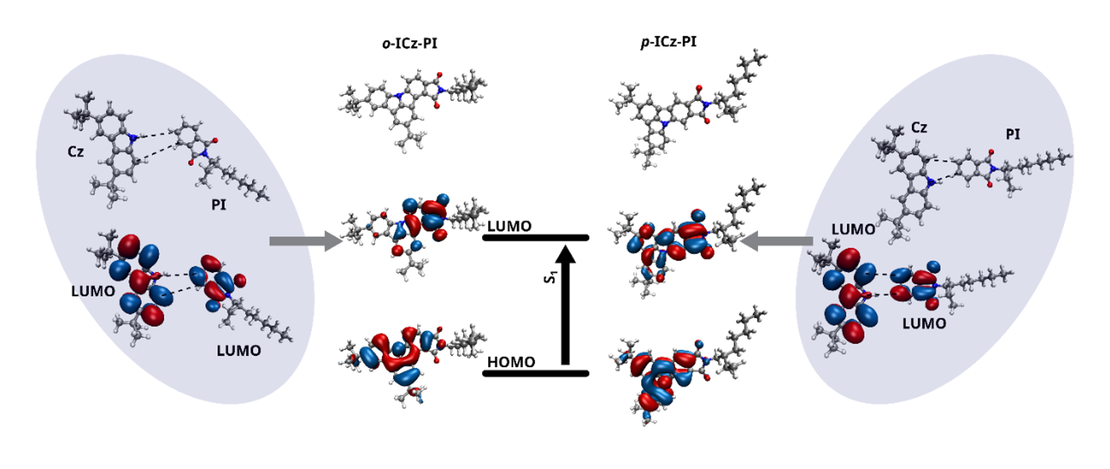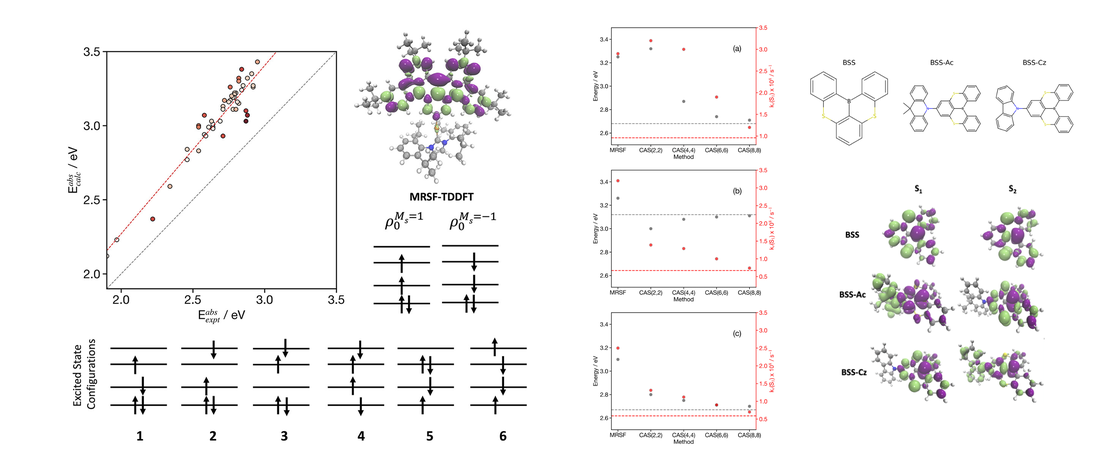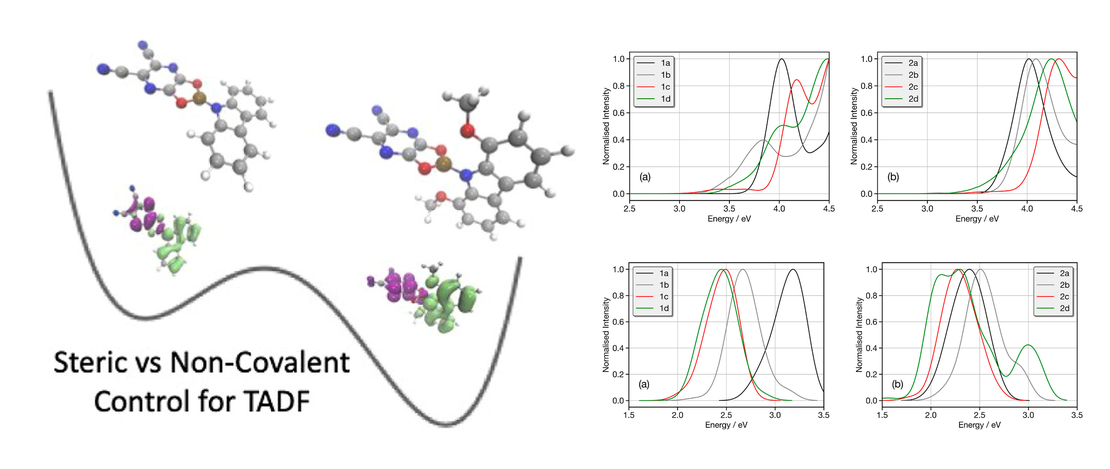
Rigid and planar π-conjugated molecules leading to long-lived intramolecular charge-transfer states exhibiting thermally activated delayed fluorescence
- Suman Kuila, Hector Miranda-Salinas, Julien Eng, Chunyong Li, Martin R. Bryce, Thomas J. Penfold and Andrew P. Monkman
- Publication
- November 7, 2024
Abstract:
Intramolecular charge transfer (ICT) is a fundamental chemical process whereby excitation moves charge from an electron donor to an electron acceptor within the same molecule. Thermally activated delayed fluorescence (TADF) exploits the ICT property to harvest triplet excited states, leading to extensive optoelectronic applications, including OLEDs. However, the highly twisted conformation of TADF molecules results in limited device lifetimes. Rigid molecules offer increased stability, yet their typical planarity and π-conjugated structures impede ICT. Herein, we introduce a new paradigm for achieving dispersion-free triplet harvesting in ICT molecules. Using fused indolocarbazole-phthalimide molecules, we demonstrate remarkably stable co-planar ICT states, yielding blue/green-TADF with good photoluminescence quantum yield and a small singlet-triplet energy gap (∆EST) <50 meV. The formation of ICT is dictated by the bonding connectivity between the donor and acceptor fragments, leading to excited-state conjugation breaking stabilising the planar ICT excited state, revealing a new criteria for designing efficient TADF materials.
Additional Resources
DOI:
10.26434/chemrxiv-2024-dpbq3 10.1038/s41467-024-53740-1
Bibtex:
Nat. Commun., 2024, 15, 1, 9611

